
Griffiths, Proceedings of the Biological Society of Washington 27(6): 27, 1914
Original Description
What is Opuntia rugosa?
Opuntia rugosa is an uncommonly found prickly pear cactus that was reported from the Pomona area of California in the early 1900s and apparently never studied again.
Details
The biggest feature, that for which it is named, is that areoles can be higher than the pad when it is new. They can rise up and give a pad a tuberculed look. As they age, the pads become smooth.
Plants are smallish, generally not more than 25(30) inches, often lower. Plants can be a bit upright—they don’t form a tree, but 2-3 pads may rise up above the ground. From a distance, plants may seem a bit yellow-green compared to surrounding vegetation. Spines are whitish (or very pale yellow) on new growth. Bases may darken. Spines may/may not darken over time to dirty gray or light brown. Spines often diverge in all directions and longer ones may be flattened (may not). Often 2-3(4) on new pads, later increasing to 4(6) on older pads. Some may be up to 2.5 inches long, but most are shorter. Stamens and anthers are yellow. Stigma is green. The cladodes are obovate, but broadly rounded above (not narrow pads). The flowers are yellow with green or light green stigmas. The fruits are a little large for the size of the plant and are dark red-purple when ripe. Fruit may have spines about 1.5 cm long that fall away early.
Ploidy is unknown.
Other Notes
Grown alongside other California Opuntia species, the plants are distinct. The authors have observed this species in limited numbers in the immediate area of Pomona, CA, near the Puddingstone Reservoir, from where it was originally described. Perhaps most of its range is covered in houses now because adjacent parts of California have been heavily developed. Status reports and population studies may be warranted for this Opuntia, and it is possible the species is essentially extinct. The population observed at Puddingstone Reservoir was encountered in 1979 and observed over the years. However, plants were not observed during the last visit in 2008.
Its existence may be unknown to many California botanists because they may consider it to be the same as O. littoralis, O. vaseyi, O. semispinosa, O. phaeacantha, or even a hybrid (due to L Benson’s treatment in The Cacti of the United States and Canada, 1983). Regrettably, Benson treated many California Opuntias as hybrids. Remarkably, he proposed that many populations of cacti were actually hybrids with O. ficus-indica as one parent, a proposal that is not supported.
We speculate it may have had a broader distribution, and pockets may exist between developed areas. Perhaps it ranged from Los Angeles (or even Thousand Oaks) to Chino and south from there. Perhaps it exists in scattered undisturbed areas. It may have approached the coast, but it is not a beach plant. We speculate that it did not grow in foggy areas.

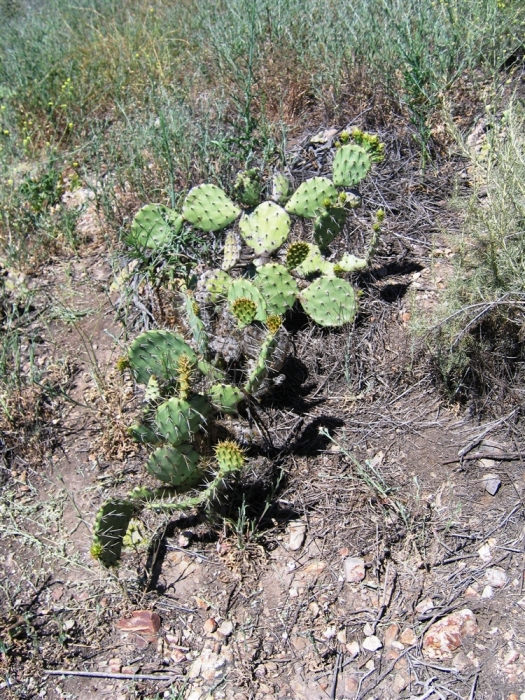
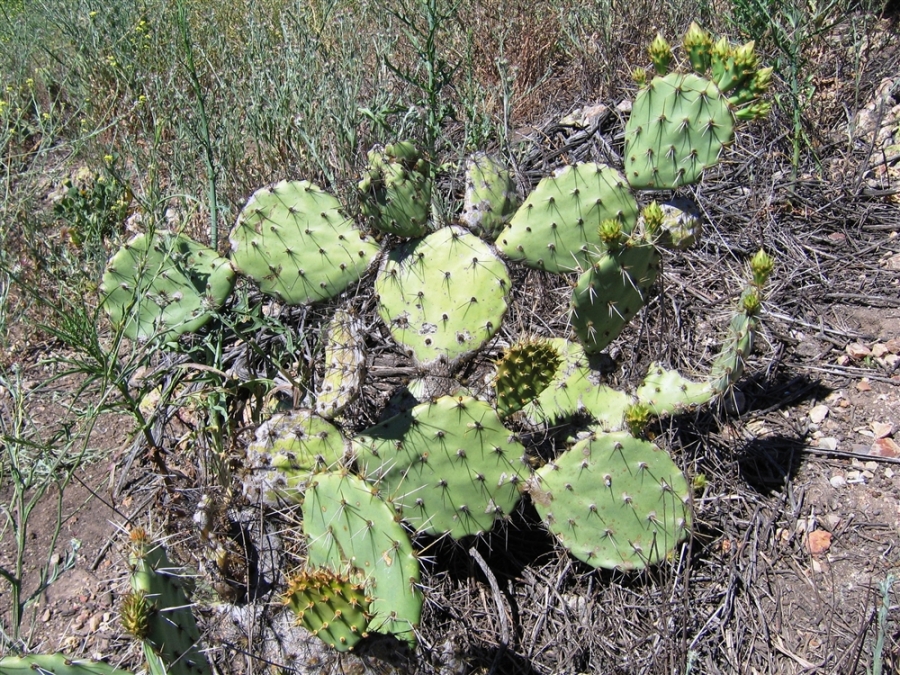
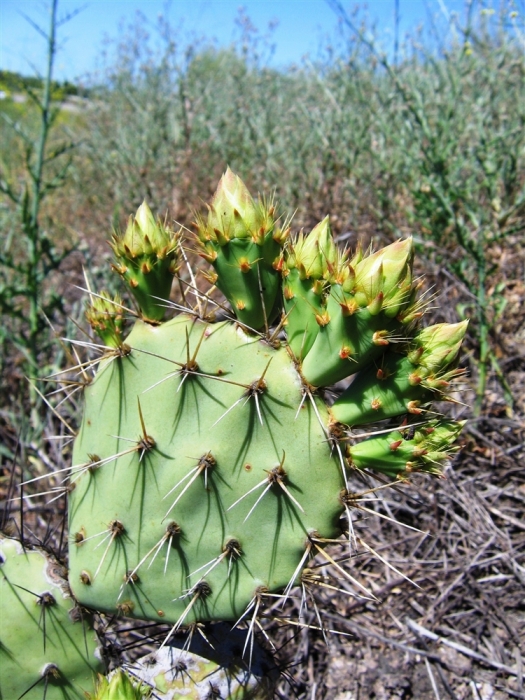
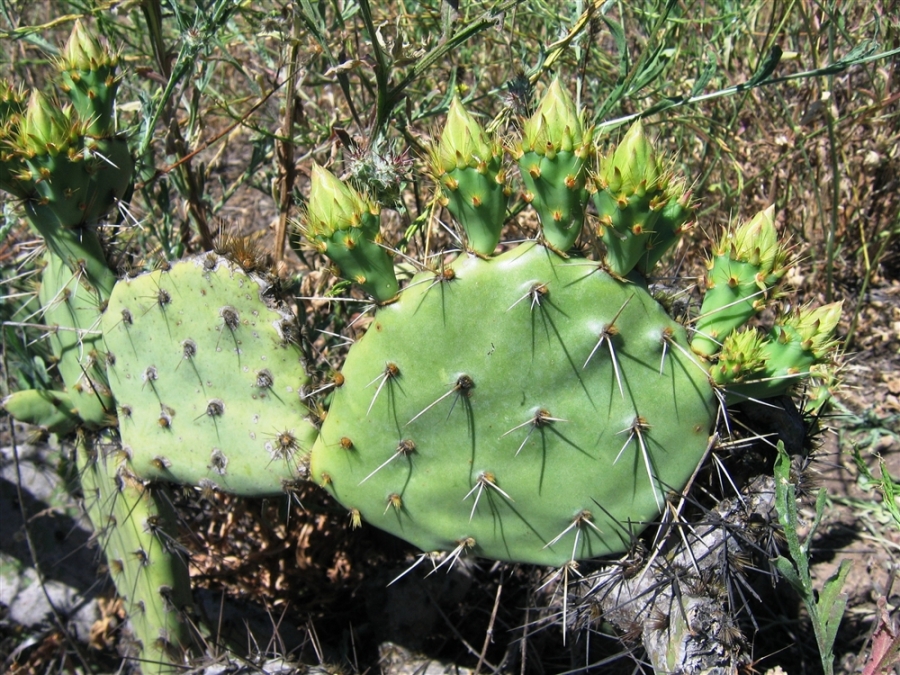
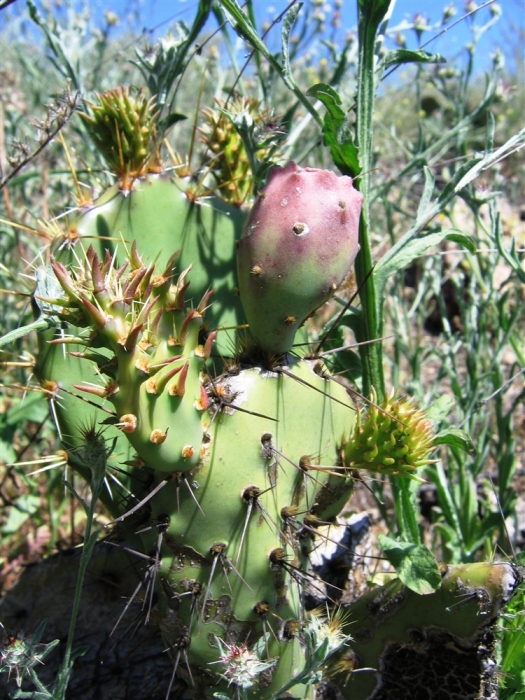
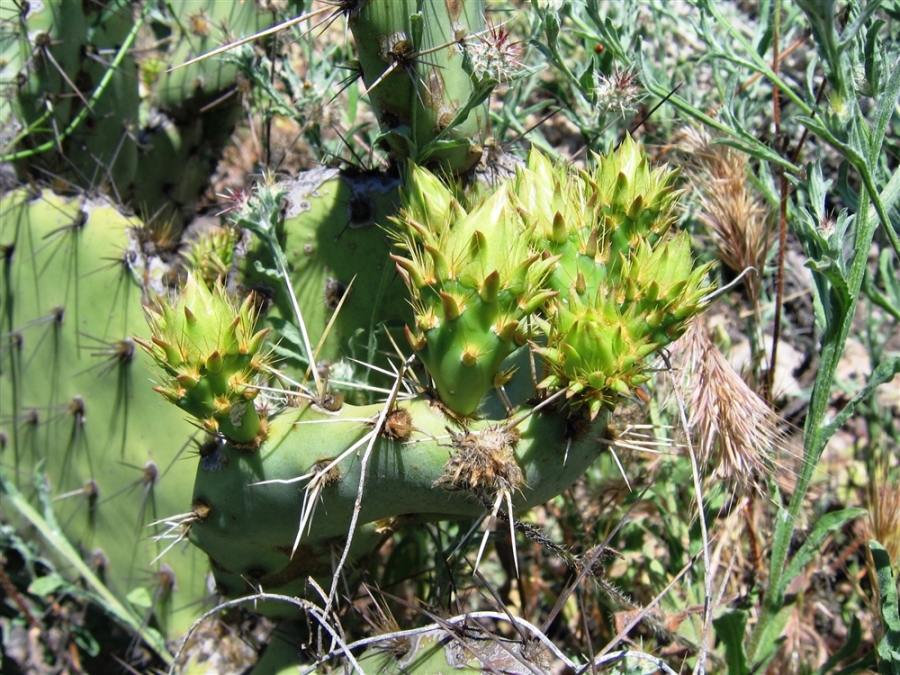
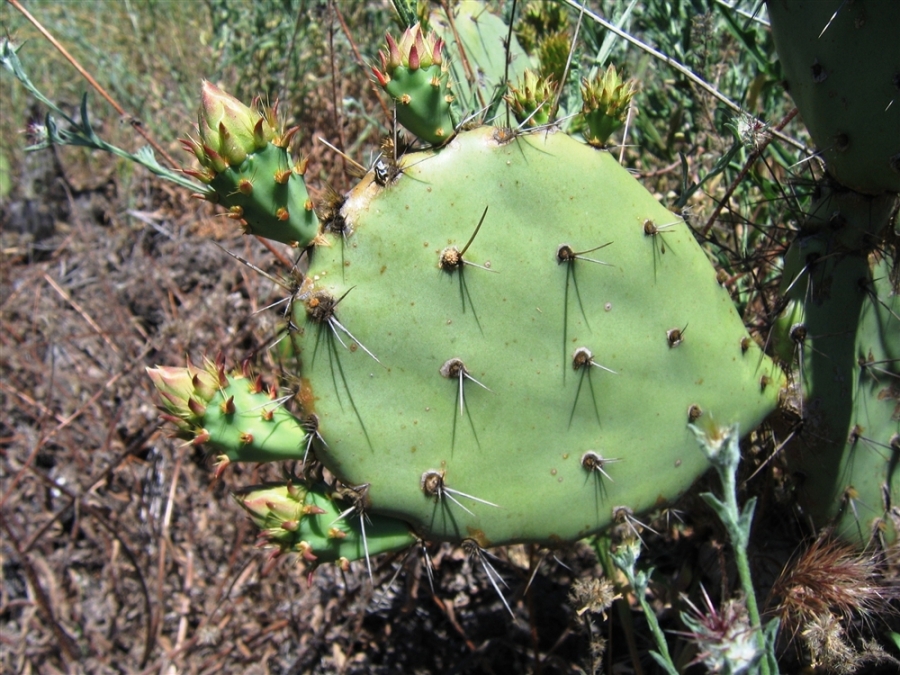
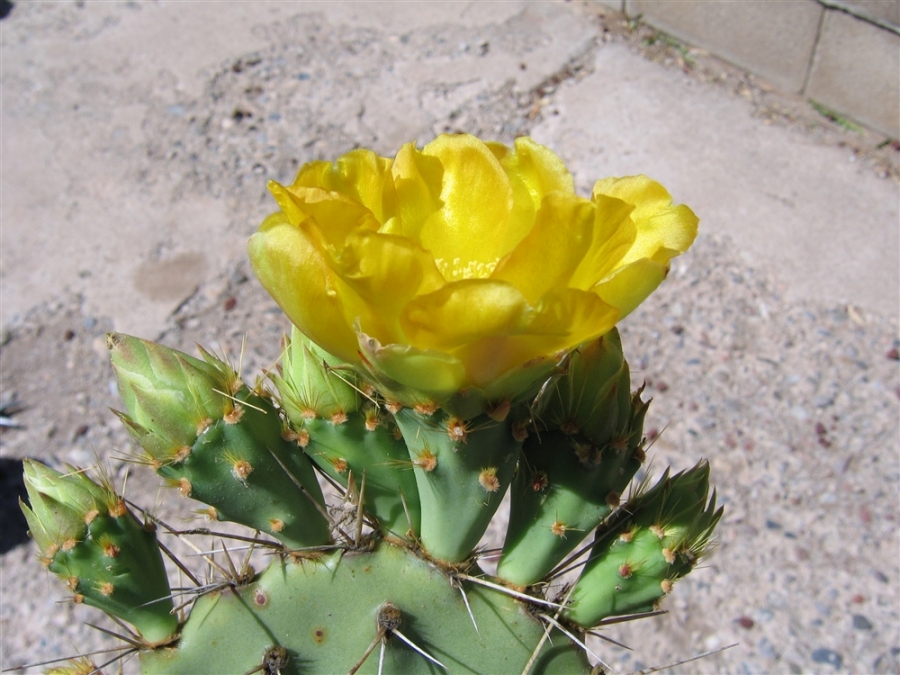
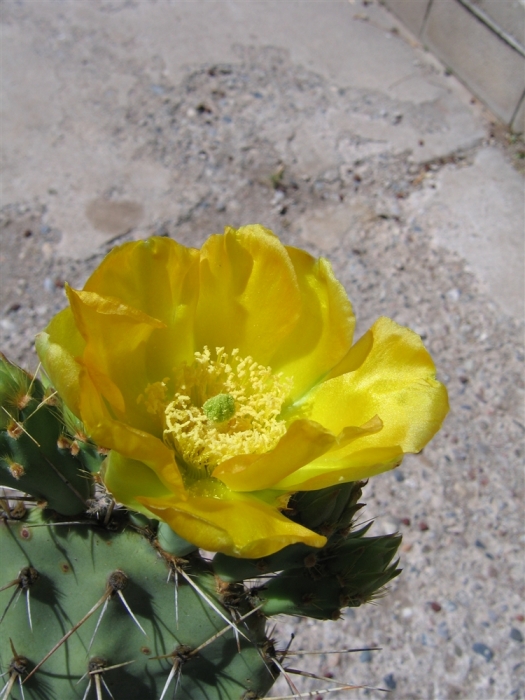
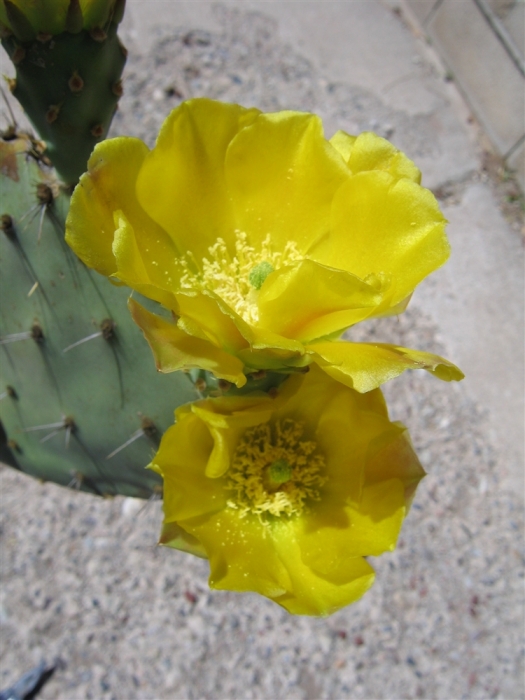
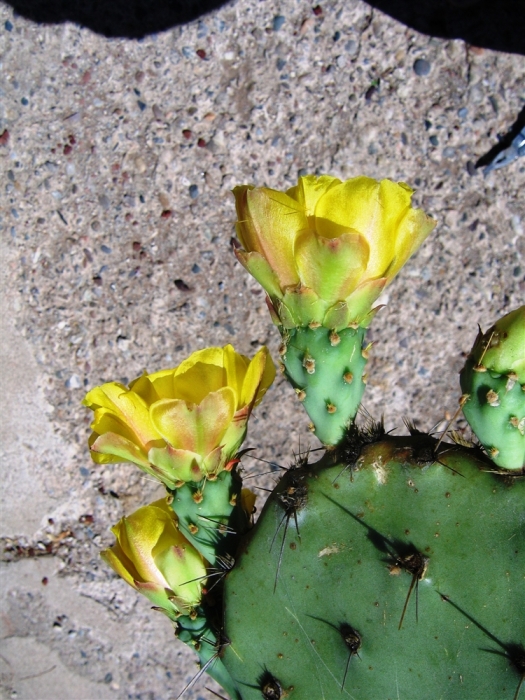
Flower color should read “Yellow” not white.
Yes. Yellow. Thanks for the comment.
How can I differentiate between this species and others that may be nearby, my school’s sanctuary in Walnut supposedly has a record of one being found but I want to investigate our cacti population to see if we have more. Thanks.
Hi, Thanks for your question.
The biggest feature, for which it is named, is that areoles can be higher than the pad when it is new. They can rise up and give a pad a bumpy look. As they age, the pads become smooth.
Plants are smallish, generally not more than 25(30) inches, often lower.
Plants can be a bit upright—they don’t form a tree but 2-3 pads may rise up above the ground.
Spines are whitish (or very pale yellow) on new growth. Bases may darken. Spines may/may not darken over time to dirty gray or light brown. Spines often diverge in all directions and longer ones may be flattened (may not). Often 2-3(4) on new pads, later increasing to 4(6) on older pads. Some may be up to 2.5 inches long, most are shorter.
Stamens and anthers are yellow. Stigma is green.
The cladodes are obovate, but broadly rounded above (not narrow pads).
Fruit may have spines up to half an inch long, but these fall away as the fruit ages.
Joe